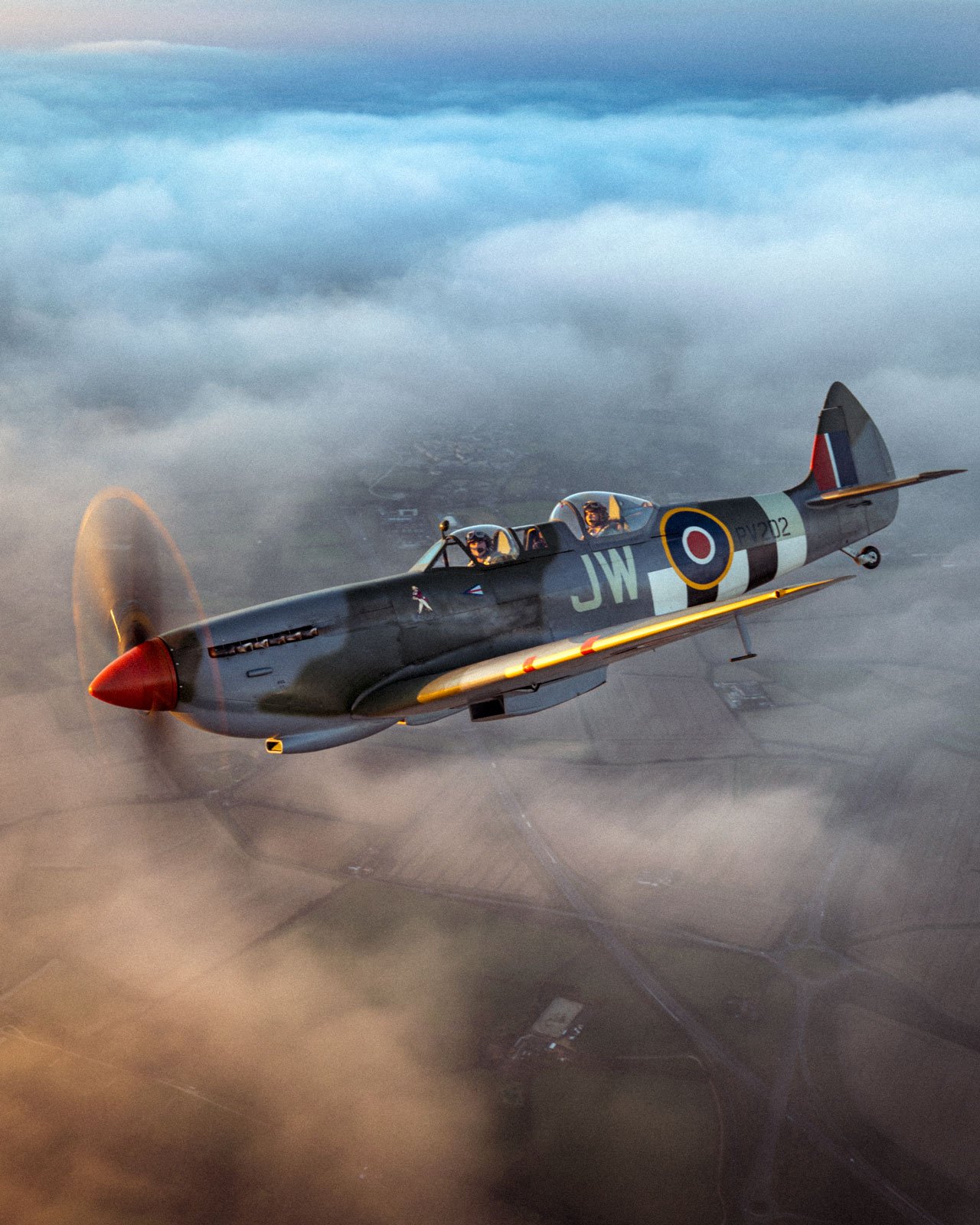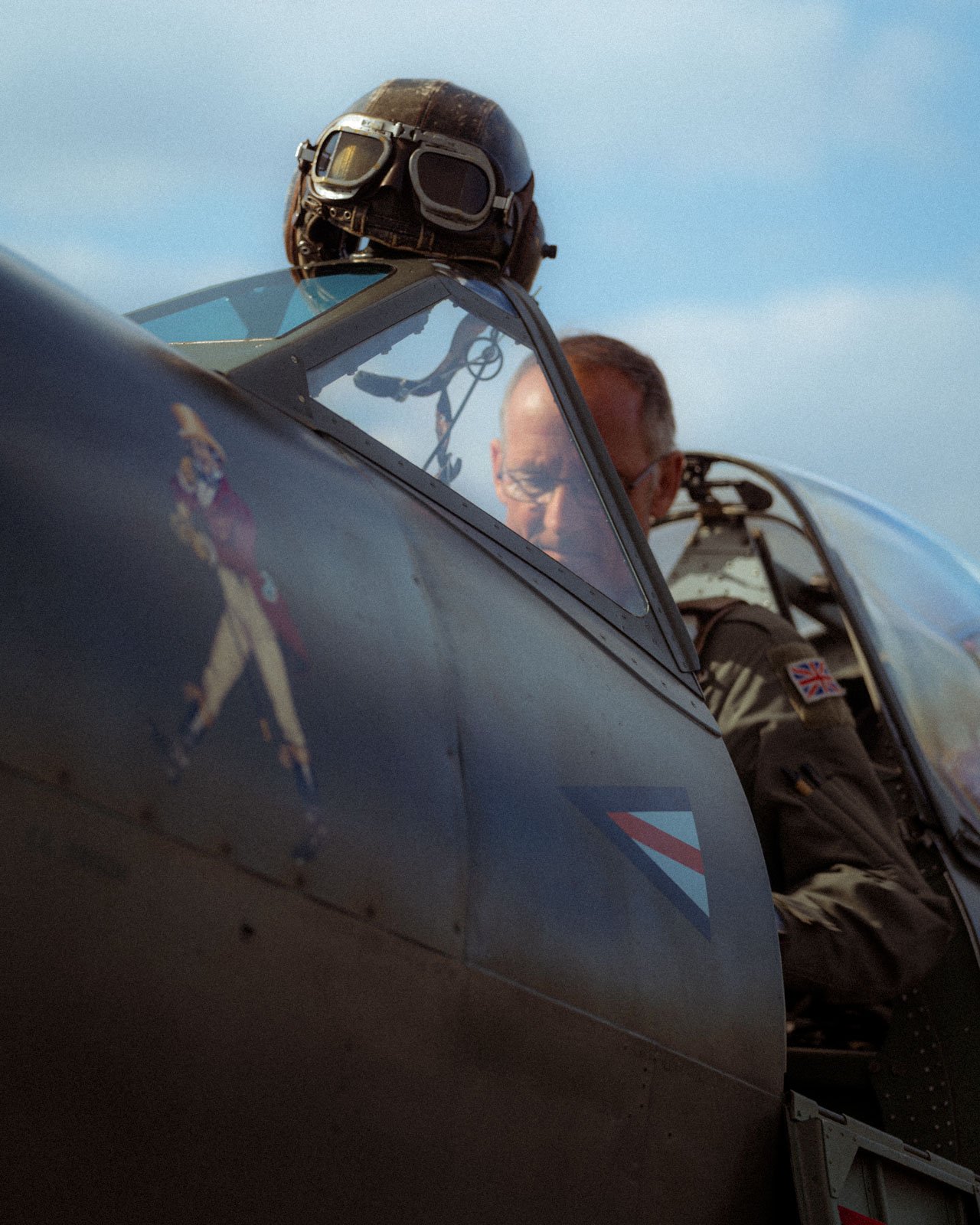
SUPERMARINE SPITFIRE IX
PV202
Supermarine Spitfire PV202 (G-CCCA) rolled off the Castle Bromwich production line as a single-seat LFIX example. It entered Royal Air Force service in September 1944 with 33 Maintenance Unit at RAF Lyneham where it was prepared for active duty. The aircraft was delivered to Merville in Northern France the following month and was immediately impressed into service with 33 Squadron, 135 Wing of the 2nd Tactical Air Force, coded ‘5R-Q’. At this point of the conflict the tides had turned, with the Allied forces moving east through Europe, and PV202 supported this push primarily with what we would now call ‘air-to-ground’ flying – strafing key targets such as rail and road transport convoys. In due course, the Spitfire was relocated to Maldegem in Belgium – it saw 20 operational sorties in total with 33 Squadron before being replaced with the more heavily laden Hawker Tempest. In early 1945 the aeroplane was issued to 412 Squadron of the Royal Canadian Air Force, flying from Heesch in the Netherlands with the codes ‘VZ-M’ and ‘VZ-W’. Ground attack was still the order of the day, and as victory in Europe drew closer, PV202 ended up operating out of captured German airfields. 76 missions were flown with 412 Squadron before the end of the war and in due course the aircraft returned to the UK.
The Spitfire languished in storage for 5 years until it was selected by Vickers Armstrong for conversion into a T9 trainer variant. This concept had not existed during wartime, however several countries post-war still had a need to train Spitfire and Seafire pilots, and the two-seat Spitfire was born. PV202 was allocated to the Irish Air Corps and became IAC161, with delivery occurring in June 1951. The aeroplane had a full set of dual controls, and just about the only task which could not be accomplished from the instructor’s rear seat was the starting of the Merlin 66 engine. In 1960 the Irish retired the Spitfire from active service and most of the fleet passed into ground instructional duties at Baldonnel. In due course IAC161 and three other Irish airframes were sold to Tony Samuelson, an aircraft collector sourcing warbirds for the then upcoming Battle of Britain film. Two of these airframes were returned to flight for the film however IAC161 was kept in storage and not required. In 1970 ownership transferred to Sir William Roberts who eventually had the aircraft moved to his fledgling Strathallan Collection in Scotland.
In 1979 Nick Grace acquired PV202/IAC161 along with ML407/IAC162. Whilst Nick restored ML407 to flying condition (becoming the well-known ‘Grace Spitfire’), he sold PV202 to Steve Atkins who commenced a return to flight at a Saffron Walden farm, just a few miles from today’s home base. The project was long and arduous but PV202 flew again in 1990 from BAe Dunsfold adorned in the 412 Squadron colours of ‘VZ-M’ it had worn some 45 years prior. The Spitfire was sold to Rick Roberts who operated the aircraft on the airshow circuit throughout the 1990s. PV202 was sold in 2000 and due to be exported to South Africa, however was written off in an accident before that could take place.
The Aircraft Restoration Company (ARCo) determined a rebuild back to flying condition was feasible and this commenced the following year. The restoration was painstaking, particularly as the decision was made to return the aircraft to its original Irish Air Corps configuration and scheme which necessitated a great deal of research. In January 2005, PV202 - by now registered with the CAA as G-CCCA - returned to flight in the hands of ARCo Managing Director and test pilot, John Romain. Two months later, John flew legendary Supermarine test pilot Alex Henshaw in the aeroplane out of Duxford Airfield. Over the years, G-CCCA has been painted to depict a range of schemes relevant to either its own history or that of the marque – Irish Air Corps, Royal Netherlands Air Force, Battle of Britain film and 33 Squadron – and has carried thousands of passengers in its rear seat.
In late 2022, following another busy flying season, G-CCCA was taken out of the air to begin an overhaul. The paint was stripped back to bare metal to allow a detailed structural inspection to take place and the myriad of aircraft systems were serviced. As this work wrapped up, a new yet distinctive scheme was needed to adorn this historic Spitfire – preferably one with a link to G-CCCA’s own history. The aircraft was repainted in the personal colours of Spitfire IX ML365/JW as flown by Group Captain Peter Russell ‘Johnnie’ Walker CBE DFC & DSO. The scheme is connected to PV202 as ML365 was another 135 Wing, 2nd Tactical Air Force, Maldegem-based Spitfire and it is highly likely both Spitfires shared dispersal space at the airfield at the same time. Walker became an ace during the Battle of France and commanded 135 Wing. As well having his initials as codes, the aircraft’s fuel tank panel was marked on both sides with a depiction of the ‘Johnnie Walker’ whisky character. G-CCCA emerged from the hangar in April 2023 resplendent in this new scheme. The aircraft is flown by Aerial Collective, ARCo’s in-house warbird experience provider, and spends much of the year giving passengers the experience of a lifetime from here at our home base of Duxford Airfield, Cambridge.





